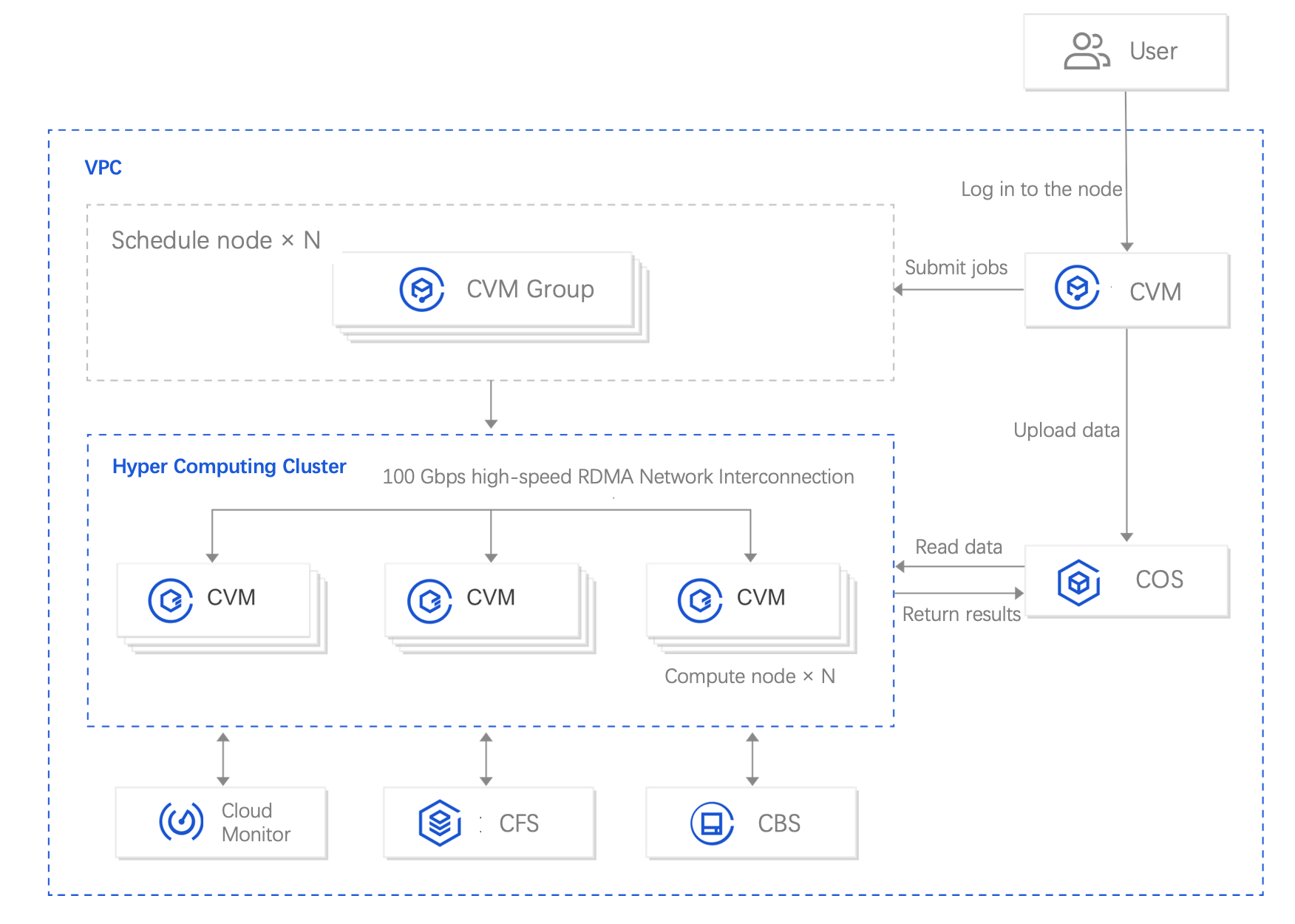
Based on the elastic high-performance CVM architecture, Hyper Computing Cluster can achieve zero virtualization loss in computing and preserve server characteristics, supporting fully automated production and elastic scaling, while combining flexible elasticity and extreme performance.

Hyper Computing Cluster supports flexible storage capacity expansion through COS or CFS products, ensuring triple-copy strong consistency. Equipped with local Nvme SSD, it offers high-speed IO instance selection, meeting heavy IO and local cache scenario requirements.

Hyper Computing Cluster supports VPC network and non-blocking RoCEv2 RDMA network for inter-node interconnection, with transmission latency down to 2us, widely supporting Ethernet-based applications.
Large-scale AI training, material simulation, industrial simulation CAE, and other high-performance computing scenarios have high requirements for the computing capability, stability, and real-time performance of servers.
High-performance CVM provides the latest generation of CPU and GPU instances, supporting GPU heterogeneous hardware acceleration and HPC job computing for higher cost-effectiveness.
High-performance CVM computing clusters support low-latency network interconnection based on RoCEv2 RDMA, with latency as low as 2-3us, and support dynamic multi-machine computing power expansion, while achieving nearly linear computation acceleration ratio.


